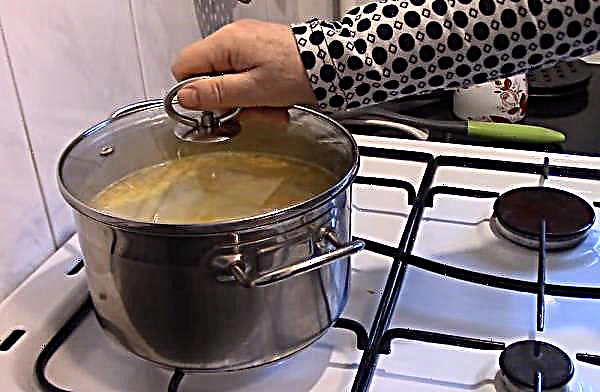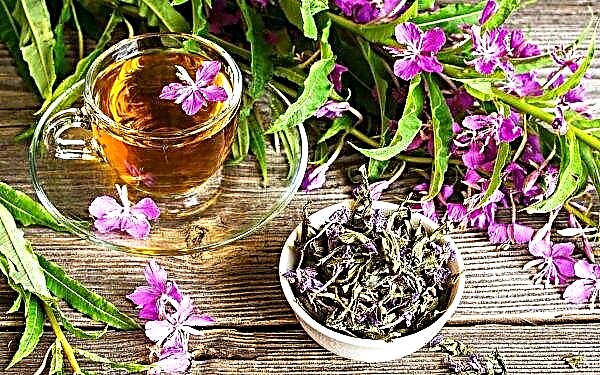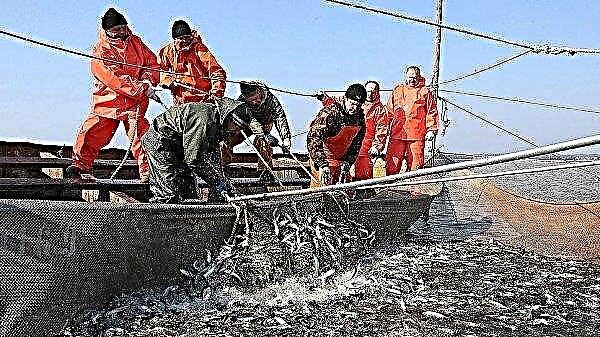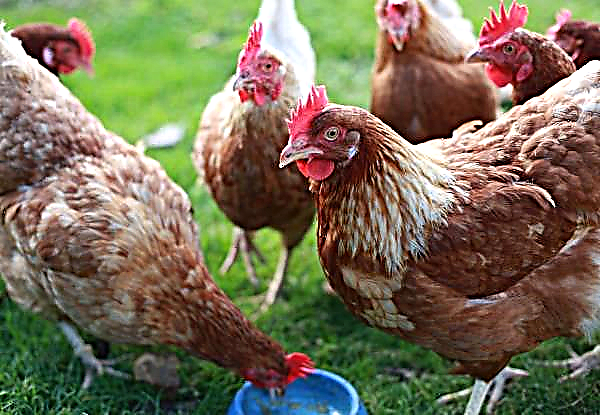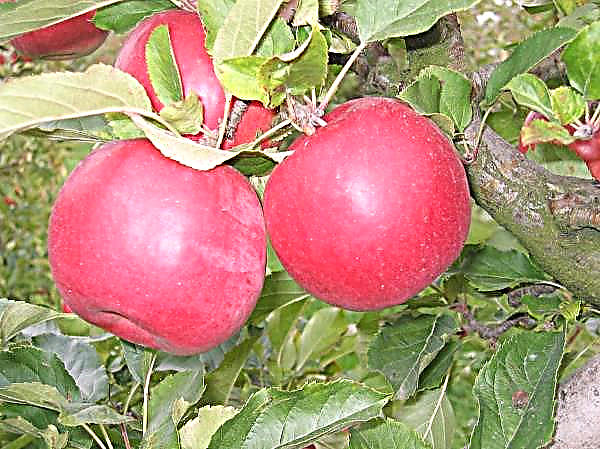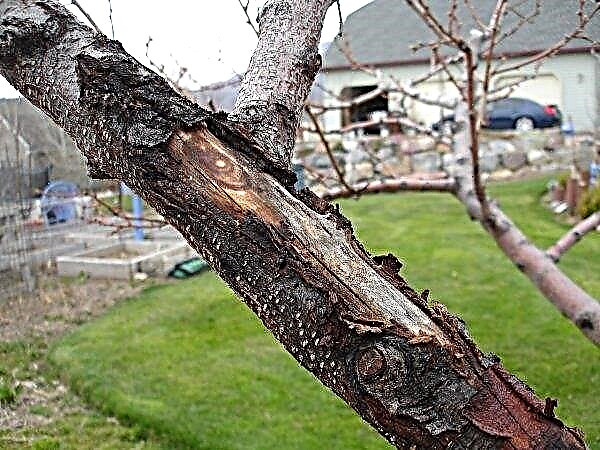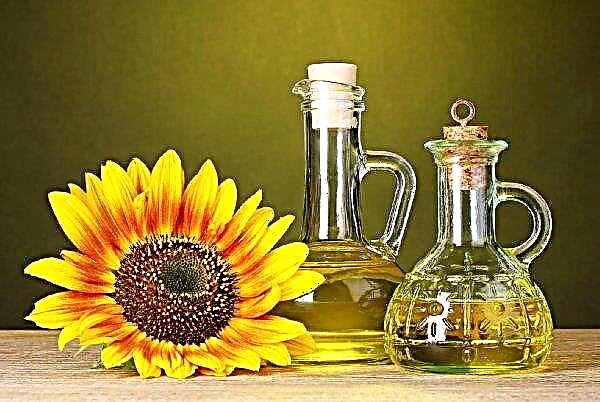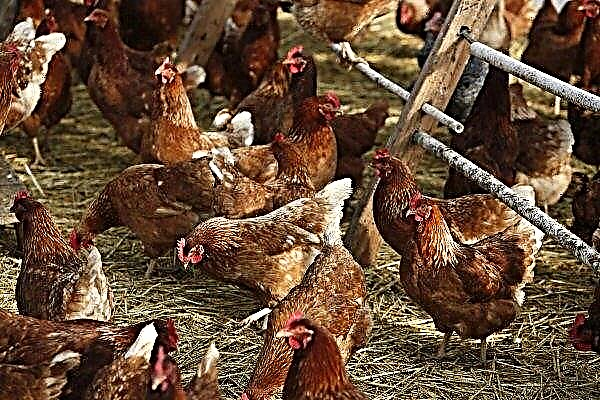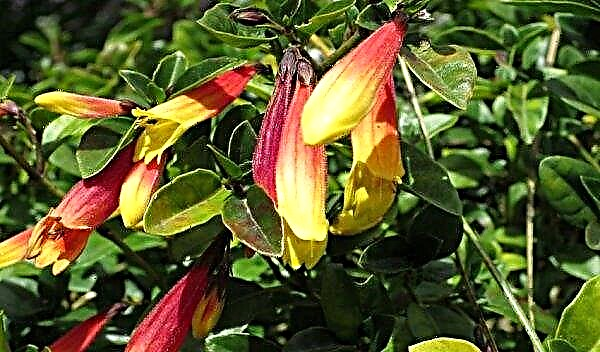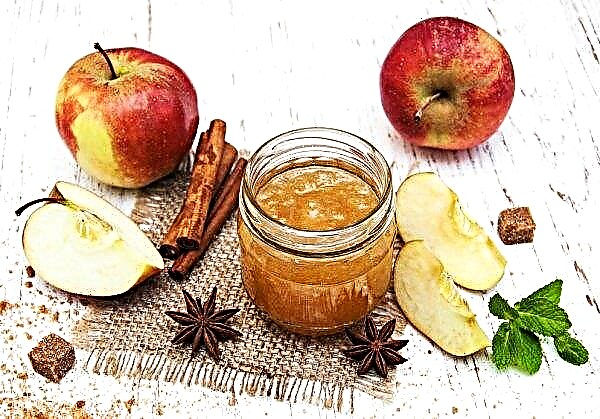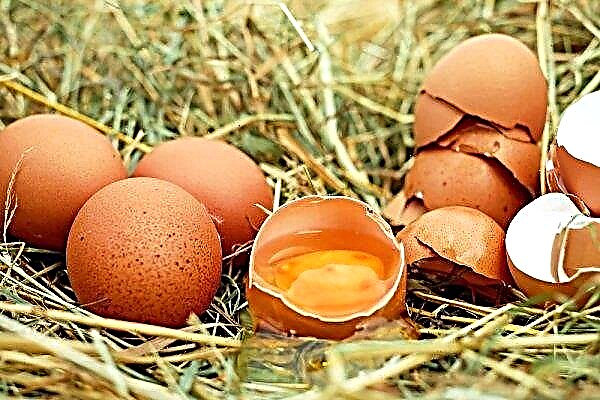In recent years, unique hybrid bundle varieties of cucumbers have been especially popular with gardeners, which make it possible to collect a rather impressive crop from a small plot of land. Among these varieties, experts distinguish cucumbers with the original name Siberian garland F1. What are the features of such vegetables, how to grow them competently and how to care for them, let's take a look.
Description and general description
Cucumbers of the Siberian garland F1 variety are a hybrid that was relatively recently bred by employees of the Chelyabinsk selection station. The variety got its original name due to its unusual appearance: a huge number of fruits are formed on long shoots, which looks like a Christmas garland with numerous lights.
Important! Even with untimely harvesting, such cucumbers do not outgrow and retain excellent taste and appearance.
A feature of the plant and the main distinguishing feature from other cultures is that several ovaries can form in one node, the number of which in some cases is 10-15 units. The variety belongs to self-pollinating species of the bouquet type, the yield of which from one bush reaches about 20 kg, i.e. 400-500 cucumbers. Siberian garland is characterized by early ripening, in which the first crop can be harvested 45 days after sowing seeds. The plant is distinguished by powerful, long stems, on which medium-length leaves of green color grow. The vegetable blossoms in the form of bouquet inflorescences. In place of one flower, 3-5 ovaries are formed. The fruits are small, rarely exceed 8 cm. The surface of the cucumber is covered with small tubercles with small spikes, and has frequent pubescence. At the base, the fruit has a dark green color, in the remaining parts it is lighter. Cucumbers are characterized by a pleasant taste with a slight sweetness and lack of bitterness. The pulp is juicy, crispy, does not form voids.
The vegetable blossoms in the form of bouquet inflorescences. In place of one flower, 3-5 ovaries are formed. The fruits are small, rarely exceed 8 cm. The surface of the cucumber is covered with small tubercles with small spikes, and has frequent pubescence. At the base, the fruit has a dark green color, in the remaining parts it is lighter. Cucumbers are characterized by a pleasant taste with a slight sweetness and lack of bitterness. The pulp is juicy, crispy, does not form voids.
Advantages and disadvantages
- The variety of cucumbers Siberian garland has a range of advantages, among which gardeners note:
- early ripening;
- self-pollination (there is no need to artificially pollinate a plant);
- resistance to low temperature indicators;
- high resistance to many ailments and parasites;
- excellent product indicators;
- high yields;
- good taste;
- universality in application: fresh, for conservation and salting;
- suitable for cultivation in regions with different climatic conditions.
- Since the variety was bred artificially, it is practically devoid of flaws. Those who are engaged in its cultivation note the following disadvantages:
- high cost of planting material;
- the need to comply with the basic rules of agricultural technology to obtain a stable, high yield;
- inhibition of the development of new ovaries during untimely harvesting.
Optimal landing times
For planting a vegetable, two methods are used: seedlings and seeds directly into the soil. Regardless of the method, thorough preparation should be carried out before planting: to disinfect the seeds, select the necessary soil, etc. To obtain seedlings, the seeds are sown in the soil in late March or early April. When the seedlings grow and get stronger, they plant it in open ground, when the ambient temperature stabilizes and the risk of night frosts disappears (approximately in the second half of May). When using the second method, the seed in the last days of May is planted in well-heated soil with a temperature not lower than + 14 ° С, every 7 cm, to a depth of 5 cm, while the distance between the rows should be about 20 cm.
When the seedlings grow and get stronger, they plant it in open ground, when the ambient temperature stabilizes and the risk of night frosts disappears (approximately in the second half of May). When using the second method, the seed in the last days of May is planted in well-heated soil with a temperature not lower than + 14 ° С, every 7 cm, to a depth of 5 cm, while the distance between the rows should be about 20 cm.
Did you know? The natural zone for the growth of cucumbers is the Himalayas. There, at the foot of the mountains, fruits in the wild still grow by themselves.
Planting and growing varieties
As mentioned above, the seedling method is used to plant cucumbers or seeds are sown directly in the ground. Let's look at the features and benefits of each method.
Seed directly into the ground
To plant cucumbers, it is recommended to purchase high-quality seed material in specialized stores.
Before planting it should be carefully prepared:
- Soak the seeds in a weak solution of salt: 40-50 g of salt will be required per 1 liter of water. Seeds that have sunk to the bottom of the tank must be used for planting, the rest should be discarded.
- The next step is the disinfection of seed material. For this, the grains must be soaked for 12 hours in a solution of 1 liter of water, 1 tsp. ash and 1 part nitrophoska.
 Warm, semi-shaded areas, where there are no sharp gusts of wind, drafts and direct sunlight, which negatively affect the development and fruiting of the plant, are perfect for the Siberian garland. Ideal precursors for cucumbers are tomatoes, corn, legumes, potatoes, onions. The garland of Siberia prefers loose, fertile, well-moistened soils, which are recommended to be prepared in the fall.
Warm, semi-shaded areas, where there are no sharp gusts of wind, drafts and direct sunlight, which negatively affect the development and fruiting of the plant, are perfect for the Siberian garland. Ideal precursors for cucumbers are tomatoes, corn, legumes, potatoes, onions. The garland of Siberia prefers loose, fertile, well-moistened soils, which are recommended to be prepared in the fall.To do this, after harvesting the autumn harvest, the land is dug up with the addition of manure - 1 bucket of fertilizer will be needed per 1 m². In the spring carry out a similar processing. If in the fall it was not possible to prepare the soil, then this can be done a few days before planting the seeds. The soil should be dug thoroughly, pour humus or compost on top with a 10 cm layer, add some wood ash, cover the soil with a film for 10 days.
Important! Experts do not advise planting cucumbers in areas where pumpkin previously grew.
Next, the planting of seed is carried out according to the following scheme:
- Dig holes up to 5 cm.
- In each hole at a distance of 5-7 cm from each other, seeds are planted.
- The recesses are covered with a layer of soil.
- The beds moisturize profusely.
 Seeds are sown in rows, the distance between which should be at least 20 cm. It is recommended that the crops be covered with a film in order to organize greenhouse cultivation of seeds. After the formation of the first shoots, the shelter should be removed.
Seeds are sown in rows, the distance between which should be at least 20 cm. It is recommended that the crops be covered with a film in order to organize greenhouse cultivation of seeds. After the formation of the first shoots, the shelter should be removed.Did you know? Breeders and genetics from the UAE have developed a unique variety of cucumbers, the fruits of which have a square shape. The main goal of the scientists was to create vegetables that are most convenient for storage.
Growing seedlings
You can get high-quality seedlings if seedlings are grown in compliance with the basic rules:
- For sowing, prepare nutritious, fertile, well-fertilized soil, which consists of sawdust, humus and peat, mixed in a ratio of 1: 1: 2.
- Pour the prepared substrate into the container and plant seeds to a depth of 2 cm.
- Pour the seed material with a small layer of soil, moisten the surface with a spray gun.
- Cover containers with future seedlings with plastic wrap, place in a warm room, with a temperature index of + 25 ° C.
- Moisten the seeds every 3-4 days with a spray bottle.
- When the first shoots appear, reduce the room temperature to + 20 ° C.
- Clean the film daily for several minutes, gradually increasing the time interval.
- When several full leaves are formed on the sprouts, remove the film.
- When the sprouts get stronger, dive them into separate containers, for example, in disposable plastic cups.
 8-10 days before transplanting seedlings into open soil, it is necessary to harden it. For this, plants are placed every day in the open air for 2-3 hours. On the eve of planting, the time spent by seedlings on the street is increased to one day. Planting seedlings is recommended in the second half of May, when the earthen lump is completely warmed up to a temperature of + 15 ° С. For planting, dig holes with a depth of about 10-15 cm, pour a handful of wood ash into each, arrange seedlings and sprinkle with a small layer of substrate.
8-10 days before transplanting seedlings into open soil, it is necessary to harden it. For this, plants are placed every day in the open air for 2-3 hours. On the eve of planting, the time spent by seedlings on the street is increased to one day. Planting seedlings is recommended in the second half of May, when the earthen lump is completely warmed up to a temperature of + 15 ° С. For planting, dig holes with a depth of about 10-15 cm, pour a handful of wood ash into each, arrange seedlings and sprinkle with a small layer of substrate.Sprouts need to be deepened into the soil to the bottom sheets. After the end of the process, seedlings should be abundantly watered using 0.5 l of settled warm water per plant. How best to grow cucumbers - seeds or seedlings - will depend on the weather conditions and climate of the region, as well as on the preferences of gardeners. The latter method is considered more simple and effective.
Did you know? According to the botanical classification, a cucumber is considered a fruit or a false berry. According to the culinary classification he — vegetable.
Cucumber care after planting
Despite the uniquely high yields, beam cucumbers Siberian garland F1 are not very whimsical to care for. The main thing is to adhere to the basic rules: moistening, top dressing, loosening the soil and preventive treatment of ailments.
Watering and fertilizing
Since cucumbers are almost 98% water, it is necessary to organize frequent and plentiful watering when growing them, which will also be determined by climatic conditions. Vegetable irrigation measures should be carried out early in the morning or late in the evening. Watering at lunchtime can cause leaf burns when water gets on it. Before flowering, the plant should be moistened every 3-4 days. It is recommended to reduce watering up to once every 2 days during the period when the first ovaries form on the cucumbers. To moisten the beds, use watering irrigation, in which the soil is irrigated by means of a watering can or the method of irrigation into ditches is used. For this, small ditches are dug between the rows, into which water is poured. At the same time, the water should be quite warm - +23 ... + 25 ° C, settled for about a day. Thick fruiting quickly depletes the plant, so it requires good, high-quality nutrition. Fertilizing per season is recommended about four times.
To moisten the beds, use watering irrigation, in which the soil is irrigated by means of a watering can or the method of irrigation into ditches is used. For this, small ditches are dug between the rows, into which water is poured. At the same time, the water should be quite warm - +23 ... + 25 ° C, settled for about a day. Thick fruiting quickly depletes the plant, so it requires good, high-quality nutrition. Fertilizing per season is recommended about four times.
The first feeding is carried out two weeks after planting seedlings in open soil or after the appearance of the first full leaves. As a rule, when applying fertilizers for the first time, nitrogen complexes are used to activate the growth and development of bushes. The use of superphosphates, humus, bird droppings is also allowed.
Important! At high temperatures and intense heat, the culture needs to be watered daily, and sometimes even twice a day, in the morning and evening hours.
The second time, cucumbers fertilize 2 weeks after the first, in this case, use an integrated approach:
- the foliage is sprayed with a solution of superphosphate;
- bushes are watered with a composition of superphosphate, ammonium sulfate and potassium;
- chalk and charcoal are scattered over the soil.
The third time fertilizers are applied one week after the formation of the first fruits. Ripening cucumbers are in dire need of potash products that can speed up the ripening process. But the percentage of nitrogen fertilizers, on the contrary, is being reduced. The fourth feeding is carried out after 10 days after the third. For her, it is recommended to use organic products, for example, cow dung or bird droppings. Fertilizers are stirred in water, in a ratio of 1: 2, give a little insist. Lightly fermented infusion is diluted with 10 liters of water and watered with a bed.
Garter and bush formation
The variety of cucumbers Siberian garland belongs to tall plants and in order to get a good harvest it requires forming in one stem and the obligatory presence of support. As a support, a makeshift trellis is perfect, which can be made from several vertical posts and horizontal rails installed between them. For formation, it is necessary to remove all stepsons to the “dew point” at 3-4 branch points of the bush, leaving only fruiting ovaries.
When the cucumbers grow another 3-5 leaves, you should remove all the side shoots, flowers. Next, pruning is carried out in a similar manner until the stem reaches the top of the greenhouse or trellis. Then it should be wrapped 2-3 times around the support, carefully fixed and trimmed. Stems that reach a length of 20–25 cm should be immediately wrapped around a vertical support, and the top should be left free.
In order for the pruning of the shoots to take place with minimal injuries for the plant, it should be carried out subject to a few simple rules:
- pruning activities in the morning, ideally - until sunrise;
- all places of cuts, in order to prevent diseases, should be treated with crushed charcoal or activated carbon;
- at one time it is allowed to harvest up to 7 cm of shoots;
- during placement of the stem on the trellis, it is necessary to maintain the most natural position, you can not twist it or force it to bend;
- on a plant, it is mandatory to remove dried, rotted leaves, weak stems.

Soil care
Cucumbers of this variety categorically do not accept the presence of weeds on the bed. That is why it is recommended to regularly weed the soil. In order not to waste extra time on weed control, experts advise mulching. To do this, lay a layer of mulch on the soil surface, which is suitable for sawdust, straw, hay, mowed grass, etc.
The mulching procedure will also allow you to save moisture in the soil, saturate it with oxygen and nutrient components, thereby activating the process of development and ripening of fruits. For bushes that are not grown in a greenhouse, but in open ground, it is especially important to carry out the cultivation of the earth. Digging the upper hardened soil layer will enrich the soil with valuable components and provide the root system with high-quality oxygen nutrition.
Possible difficulties growing cucumbers
This hybrid of cucumbers has excellent resistance to diseases such as brown spotting, cucumber mosaic and powdery mildew.
However, there are a number of other diseases that can affect the plant, in particular:
- White rot - It is expressed in the appearance on the fruits of small white formations, which are subsequently converted into a solid white coating. A 1% solution of Bordeaux liquid, with which foliage is sprayed, helps to fight the disease.
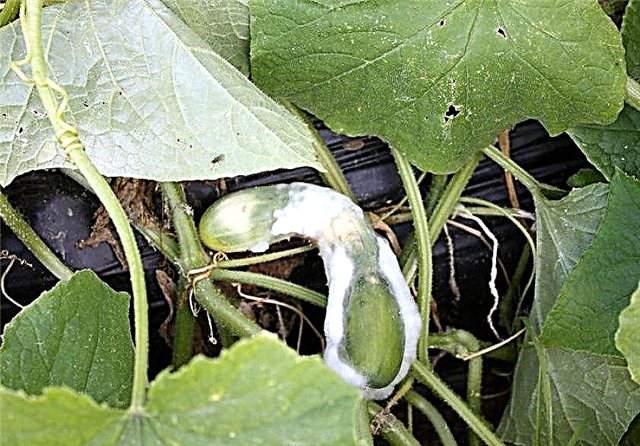
- Root rot - it is easy to recognize by staining the lower leaves and the stem at the bottom in brown. In this case, the plant withers and withers. For the treatment of the bush, a solution of 1% copper sulfate or a solution of copper chloroxide, which is used to treat the plant, is used.
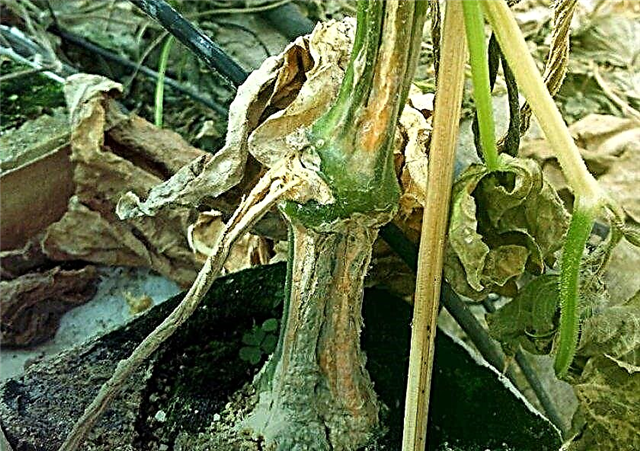
- Gray rot - manifests itself in the form of mucus of a gray color at the junction of the stem and flower. An effective remedy against an ailment is a mixture, which includes 1 part of copper sulfate, 1 tbsp. wood ash and 1 tbsp. lime.
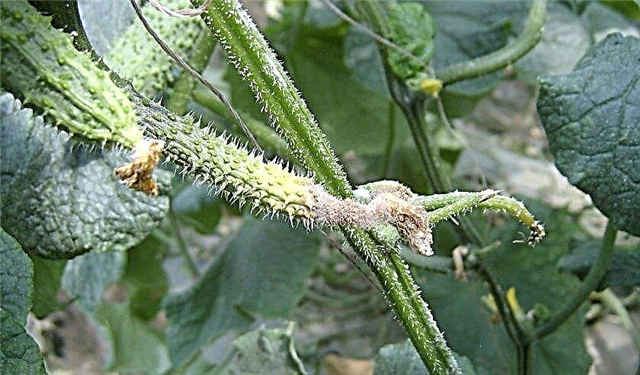
- Anthracnose - a symptom of a lesion is the presence of yellow spots on leaf blades and shoots. For the prevention and treatment of plants, a solution of Bordeaux fluid is used.

In addition to the ailments that most often arise due to violations of the rules for caring for cucumbers, various pests can attack the vegetable.
The following symptoms signal the presence of parasites:
Modern insecticides, which are regularly sprayed on the crop, have good pest control effectiveness. You can protect cucumbers from the negative effects of parasites by loosening and weeding the soil in time, removing plant debris after harvesting and digging in the autumn.
Harvesting, storage and use
The collection of cucumbers of the Siberian garland, as a rule, is carried out one and a half months after planting, at the end of July. The fruits are harvested every day or every other day, avoiding longer intervals between harvests.It is better to carry out this event in the morning or in the evening, when the cucumbers contain the maximum amount of moisture. The fruits must be carefully cut with a sharp knife, leaving a small tail a few centimeters. You can not pull, pull and twist cucumbers, so as not to damage the plant.
It is recommended that the plucked fruits be stacked in wooden or plastic boxes and stored in a dry, cool place, at constant temperature values of +7 ... + 10 ° С. The maximum shelf life is 14 days. Storage of crops in the refrigerator, in open bags is also allowed. In this form, the fruits are able to maintain their presentable appearance and taste for 7-10 days. The hybrid is great for fresh consumption or for preparing preparations for the winter: pickling, pickles, sourdough. The Siberian garland F1 is one of the most popular cucumber hybrids today, with practically no shortcomings. Subject to the simple basic rules of agricultural technology, even a novice gardener will be able to get a large crop of tasty, juicy and extremely healthy fruits from a small area.
The hybrid is great for fresh consumption or for preparing preparations for the winter: pickling, pickles, sourdough. The Siberian garland F1 is one of the most popular cucumber hybrids today, with practically no shortcomings. Subject to the simple basic rules of agricultural technology, even a novice gardener will be able to get a large crop of tasty, juicy and extremely healthy fruits from a small area.





